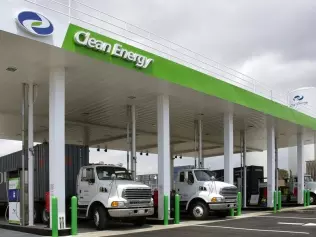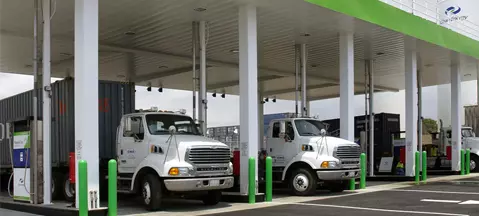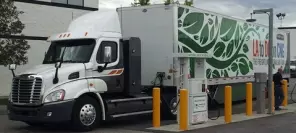- Main page
- Search
- Up to date
- Products
- Technology
- Vehicles
- Video
- Conversion Payback Simulator
Port Injection - Conversion Payback Simulator
Direct Injection - Conversion Payback Simulator
Diesel - Newsletter
Natural gas semi-truck tractors: yay or nay?
 loading results...
loading results...Our first thought when we asked the question to ourselves was: NG semi-trucks are so wildly unpopular due to insufficient refueling infrastructure – how can you think of running a piece of cargo across the country when there is nowhere to refill your tanks along the way? And yes, this is a factor, but deep down the reason is much more trivial. It's primarily about money.
 © Green Car ReportsThis is something we'd like to see more often. Perhaps one day we will, but not just yet
© Green Car ReportsThis is something we'd like to see more often. Perhaps one day we will, but not just yetWhy money when there's so much to be saved with natural gas? Well, yes, there is, but if a diesel semi-truck costs 150 thousand dollars and a CNG or LNG counterpart bears a 50 thousand dollar premium over that price, many fleet operators will think twice before going for gas. And then they'll think once more and go for diesel.
True, the premium will be offset through lower running costs in approx. 4 years (provided annual mileage of 125 thousand miles/200 thousand km), but that's about the lifespan of a truck, so a natural gas vehicle would break even, but wouldn't yield any tangible benefits other than sending fewer pollutants into the air.
Still, despite long amortisation periods and insufficient refueling infrastructure, sales of natural gas trucks soared in the US by 20% in 2014, to nearly 10500 vehicles. While this is a remarkable number, it only comprises 4% of the number of diesel-powered trucks sold (over 281 thousand). And since diesels are growingly efficient (which is required by federal regulations), natural gas trucks' situation isn't becoming any easier. Broader adoption of LNG (offering less frequent refueling than with CNG) and development of publicly accessible filling stations will come to the rescue, but not earlier than within a few years.







